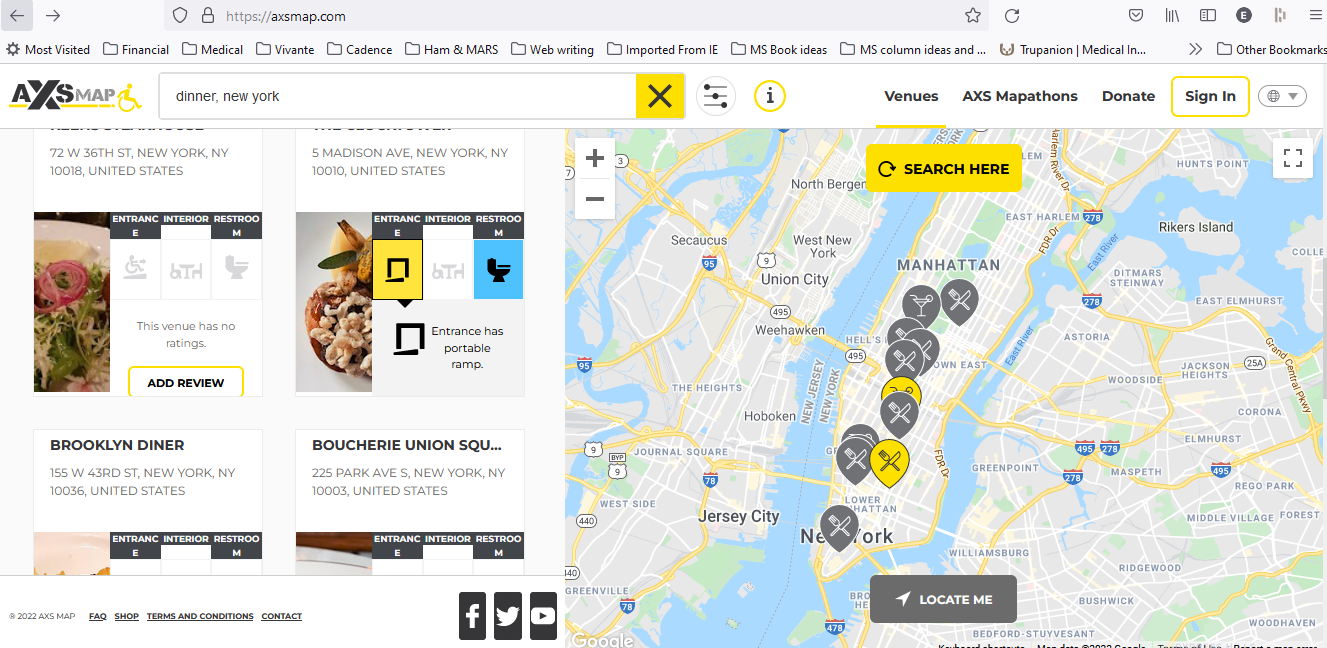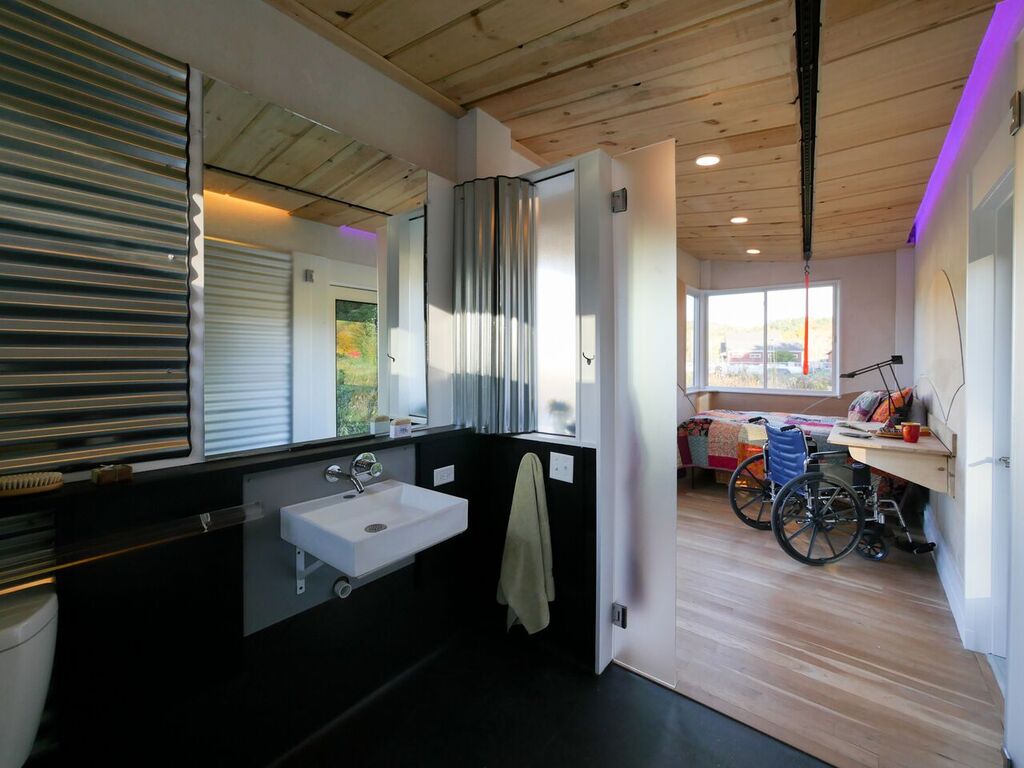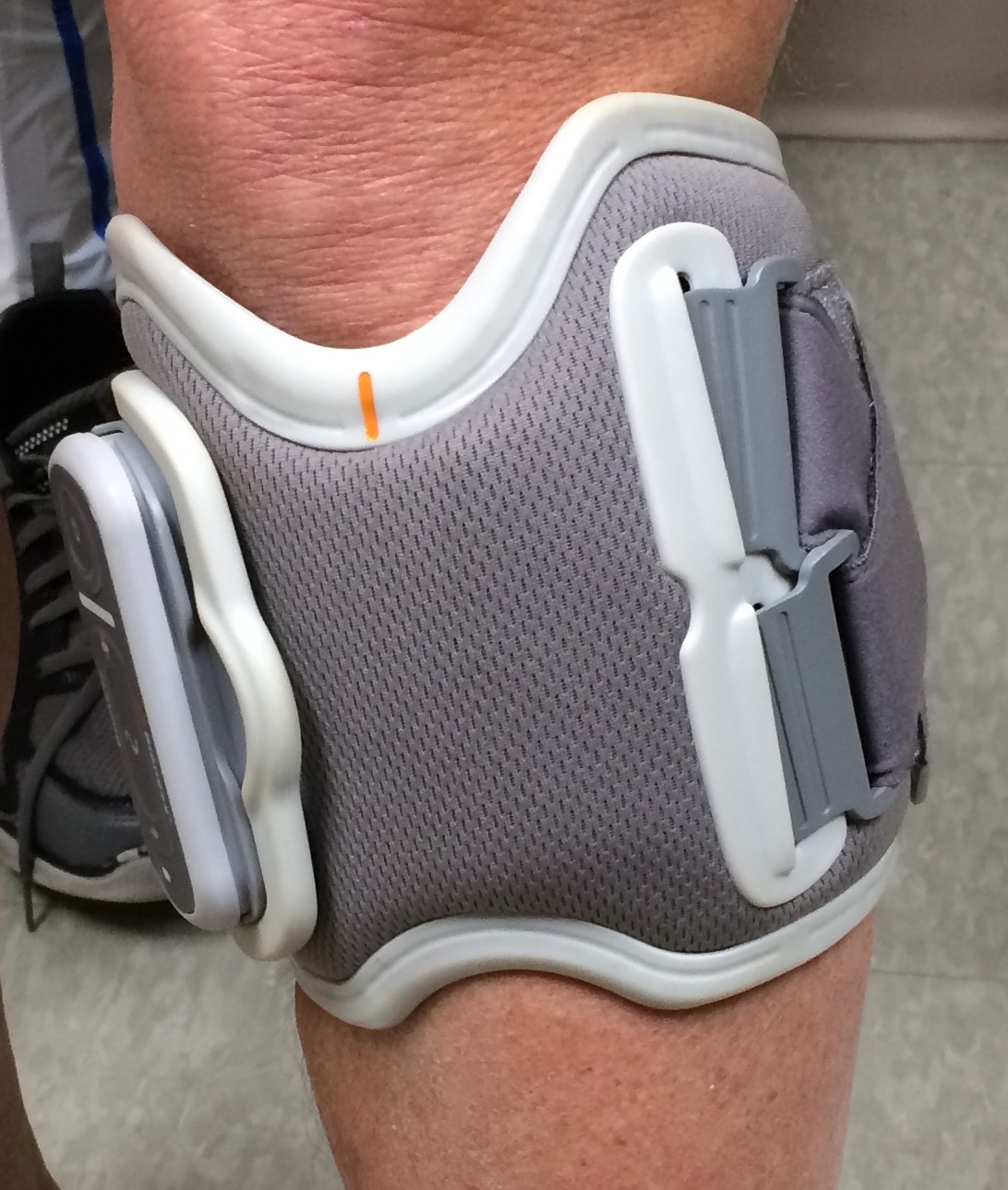If you’re like me, you’re always wondering what obstacles you’ll need to overcome if you eat at a new restaurant or visit another venue you’ve never been to before. Will you physically be able to enter? If so, can you navigate once inside? Are the bathrooms accessible?
You could call ahead, of course, but wouldn’t it be better if you could obtain firsthand information from someone with a disability who has been there?
Well, there’s a map for that.
Crowdsourcing the AXS map database
AXS Map is a volunteer effort fueled by activities called “Mapathons.” These are community events where participants form teams and compete to rate and review the accessibility of various neighborhood locations.
After checking out venues, which are mostly restaurants, participants can enter their discoveries into the AXS Map database. The results are searchable by venue type and location. For example, enter “drinks, New York,” and a map will appear showing various watering holes from Google Places.
Locations checked by AXS volunteers are noted by colored-coded pins indicating that they have been rated for their entrance (including the number of steps), interior, and restrooms. Blue means the establishment is accessible, yellow means caution, and orange indicates an alert. Clicking on a pin brings up details about each location.
AXS Map could include more if you help
AXS Map claims that over 280 Mapathons have been held globally in the last decade, and that its database is the largest for accessibility data in the U.S. But it seems to me that it could use a lot more input. When I searched AXS Map for several major cities in North America and Europe, only a handful of reviewed locations appeared.
That may be why I received an email from the AXS group suggesting that people provide “virtual” reviews. With virtual reviews, rather than actually visiting a venue, people would call and ask several accessibility questions, and answers are made available to registered users of the website.
Addressing unmet needs
AXS Map was the idea of documentary filmmaker and disability rights advocate Jason DaSilva, who was diagnosed with primary progressive MS at age 25. DaSilva was one of 10 finalists in last year’s Lyfebulb-Bristol Myers Squibb Innovation Challenge for MS. He said he understands the social isolation that can occur when one must deal with accessibility problems. Hopefully, AXS Map will help to address some of those unmet needs.
(This post first appeared as my column on the MS News Today website.)



